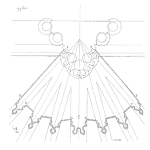
Maintenance, is already a big enough challenge for many of us, yet beyond lies the realm of Asset Management. Back in 2004, As the second edition of Uptime was being written, the UK was introducing a specification for Asset Management and requiring network utilities to implement it. Drivers included the justification of rates charged to customers by these natural monopolies, the need to convince regulators that good asset management was indeed being practiced and to avoid failures that were increasingly becoming more serious and more publicized. The UK’s Publicly Available Specifications, PAS 55-1 and -2, were the first in this field. Those specifications underwent revision a few years later (2008) and early implementations were successful. The Institute of Asset Management (IAM) in the UK became the primary proponent of PAS 55 and the driving force behind a movement to create a new international standard. Along the way various documents were written to explain asset management and various national and international groups were formed to promote good asset management – some from national groups that were focused predominantly on maintenance. [Read more…]










